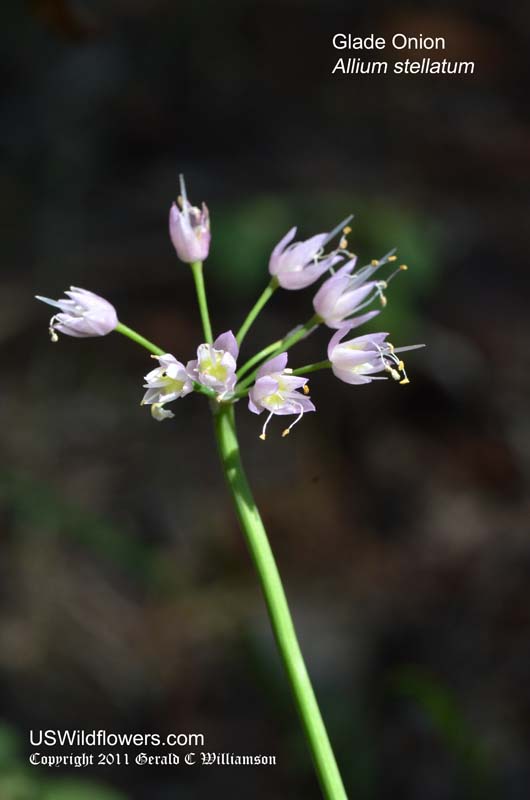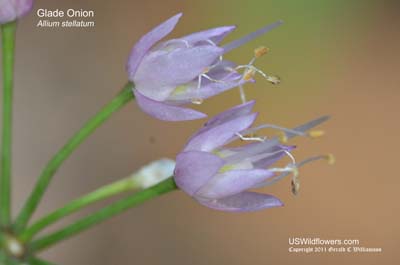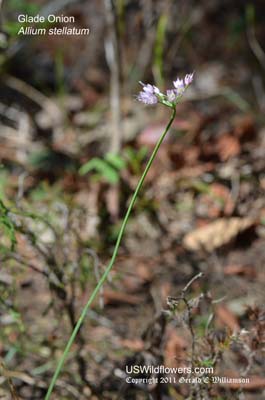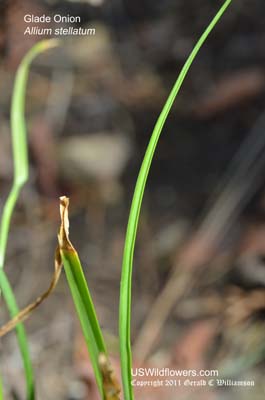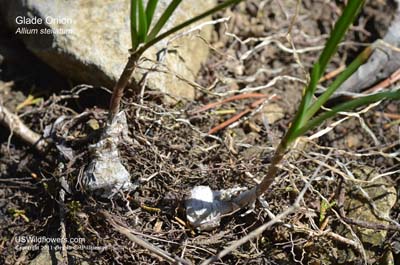Wildflowers of the United States | |||||||||||||
| |||||||||||||
Allium stellatum - Glade Onion, Prairie Onion, Cliff Onion, Autumn Onion, Lady's Leek, Wild Onion. | Note: 9/6/2013 - After seeing more specimens at the location where these photos were taken, and doing further research on Allium cernuum and Allium stellatum, I am not sure whether this is Allium cernuum or Allium stellatum. There is a bit of nod remaining in the umbel, but that is not a certain characteristic. The flowers seem more campanulate than stellate, implying cernuum. The bulb seems more ovate than elongate, implying stellatum. I'm leaning toward cernuum. The USDA still lists Allium in the Liliaceae family, although some recent classification efforts have moved it into the Amaryllidaceae - Amaryllis - family. Since ITIS lists the genus in Amaryllidaceae, I have included the Allium species in that family here as well. Glade Onion grows in thin soils over limestone; frequently found in cedar glades. It is also found in rocky prairie soils, and thus in some areas carries the common name Prairie Onion. Allium stellatum is Endangered in Tennessee, and is not even listed by the USDA as being found in Georgia, although that is where these photographs were taken. The plant was shown to me by Jay Clark, at what is likely the easternmost extent of its range. Similar Allium Species:
Found in: AR, GA, IA, IL, IN, KS, MI, MN, MO, ND, OK, SD, TN, TX, WI, WY Leave comments on Allium stellatum at this link.   Map courtesy of The Biota of North America Program. Map color key Search Our Database: Enter any portion of the Scientific, Common Name, or both. Do a general Google search of the entire site: #ad #ad
| #ad
| | ||||||||||
|
Commercial / Cookie Notice Looking for Wildflowers for a specific state? Check here: | |||||||||||||
|
All content except USDA Plants Database map Copyright Gerald C. Williamson 2025 | |||||||||||||
Code Update 20230302

